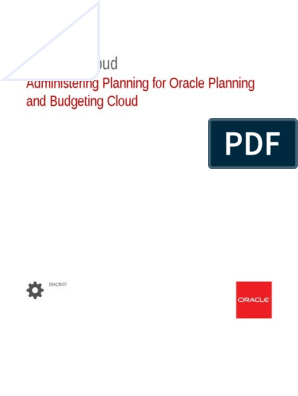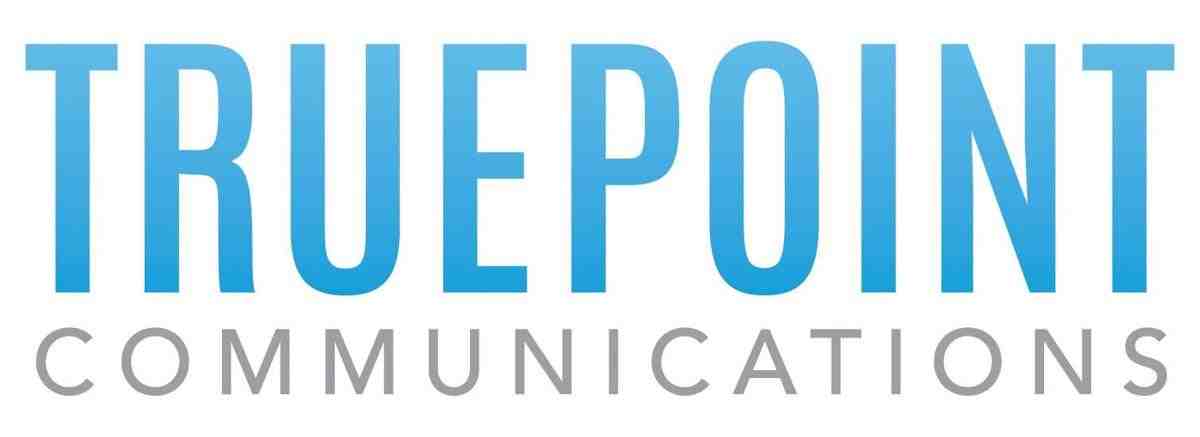AUSTIN, Texas, January 25, 2022 / PRNewswire / – Syntax, a leading provider of application-managed multi-cloud services and mission, has increased its investment in Oracle Cloud Infrastructure (OCI) as part of its multi-cloud and it will accelerate the Oracle E-Business Suite conversion to the cloud. As part of this partnership, Oracle and Syntax will jointly allow on-site Oracle E-Business Suite customers to migrate or extend their solutions by taking advantage of lower OCI costs, better performance, better scalability, and a wide variety of services platform.
Under the newly announced partnership, Oracle and Syntax will jointly market and sell solutions and provide residence, migration, training and customer success activities. The collaboration also puts Syntax in a position to provide more value to customers by offering additional services and integrating Oracle PaaS technologies, such as Oracle Integration Cloud and Oracle Analytics Cloud.
Driven by the need to provide better price performance, high availability, and built-in security, Syntax will offer OCI as a fully integrated single-contractor option to its existing private cloud customers. Syntax will also extend OCI services to its on-premises customers who have not yet realized the benefits of Oracle E-Business Suite in the cloud.
Organizations around the world rely on Syntax to provide comprehensive technology solutions to meet their IT and enterprise resource planning needs. With more than 25 years of experience providing cloud and managed services for Oracle E-Business Suite applications, Syntax’s team of over 1,750 certified experts provide full-package, full lifecycle functional and technical services to organizations worldwide. In addition, Syntax has been approved as a certified Oracle Cloud Lift Services partner. This will allow Syntax and Oracle to work closely together to seamlessly migrate Oracle customers to OCI with a single provider.
OCI is designed to run all applications – from enterprise logging systems to data lakes – with improved performance, SLAs, increased security, and minimal modifications. By moving Oracle E-Business Suite to OCI, customers can expect greater agility, improved productivity, and a reduced cost of ownership compared to on-site locations.
As part of Oracle and Syntax’s broader strategic initiative to provide OCI for Oracle E-Business Suite customers, Syntax has quickly integrated OCI into its existing suite of tools and automation, giving customers greater visibility, flexibility and control over their EE-Oracle. Business Suite applications ecosystem. While customers benefit from the features and functions provided by Oracle E-Business Suite and OCI, this partnership also offers Oracle a reliable and valid partner in Syntax to operate and manage the services’ n successful.
“The power of Syntax’s managed services and Oracle’s next-generation cloud infrastructure provides our Oracle E-Business Suite customers with a holistic end-to-end experience,” said Christian Primeau, Global CEO, Syntax. “Beyond the day-to-day operations of Oracle E-Business Suite, we are excited about the opportunities to leverage OCI for our customers in the areas of security, data integration and applications, analytics, and DevOps.”
“As an Oracle Cloud service provider, Syntax has a deep and rich history of offering its customers managed services, application management, and top-tier professional services,” said Dave Profozich, senior vice president, ISV Ecosystem, Oracle. “We are excited to continue our partnership with Syntax and extend the benefits of unrivaled cost savings, performance, and availability that OCI offers to organizations worldwide.”
Syntax is a member of Oracle PartnerNetwork (OPN).
Oracle offers integrated suite of applications along with secure, autonomous infrastructure in the Oracle Cloud. For more information on Oracle (NYSE: ORCL), visit us at oracle.com.
Oracle, Java, and MySQL are registered trademarks of Oracle Corporation.
View original multimedia download content: https://www.prnewswire.com/news-releases/syntax-taps-oracle-cloud-infrastructure-as-strategic-platform-for-multicloud-managed-services-301466904.html
How does syntax affect tone?

The Oxford Dictionary defines syntax as “the arrangement of words and phrases to create well-formed sentences in a language.” & Quot; Your syntax, or sentence structure, greatly affects the tone, mood, and meaning of your sentence. See the article : Debunking The Managed Services Myths. It can make something sound more formal. … The main goal of syntax is clarity.
What is the effect of using syntax? Author syntax can make a phrase or sentence enjoyable to read, or it can make the phrase or sentence annoying and unpleasant. Syntax can also make a writer’s words more memorable. Writer syntax is just one element of what we call an author’s style.
How does sentence structure affect tone?
Tone is the overall feel of a story. One of the easiest ways to show tone and consequently the audience is to control the structure of your sentence. See the article : How confident can organizations be in their managed services security?. … An simplistic explanation would say that simple sentences are for younger audiences, while longer sentences are for older audiences.
What is the effect of sentence structure?
When it comes to communication, sometimes less is more. Think about the importance of sentence structure – short, simple sentences or shortened sentences can create tension, urgency or urgency, while longer compound or complex sentences are slower, and often appear in formal texts.
What affects the tone of text?
To really understand tone types, you must test them on the page. … At other times a tone comes from an intentionally affected style of writing that reveals little about the author’s attitude. Ultimately, tone is less about what an author feels and more about how that author wants the reader to feel.
What Is syntax in tone?
TONE: the author’s or speaker’s attitude to the topic, audience, or events of the text. Word choice (pronunciation), detail, imagery, and sentence structure (syntax) all contribute to the understanding of tone.
What Is syntax in a text? To see also : Ericsson and Telenet extend Managed Services partnership and begin nationwide 5G network rollout in Belgium.
The word “syntax” comes from Ancient Greek for “coordinate” or “arrange together” In both spoken and written language, syntax refers to the set of rules that determine the word order of a sentence . Along with pronunciation, it is one of the key ways in which authors convey meaning in a text.
How does syntax show tone?
The Oxford Dictionary defines syntax as “the arrangement of words and phrases to create well-formed sentences in a language.” Your syntax, or sentence structure, greatly affects the tone, mood, and meaning of your sentence. It can make something sound more formal. … The main goal of syntax is clarity.
How does syntax and diction affect tone?
It conveys the author’s attitude to the subject. Diction (word choice) and syntax (writing style) influence tone. In academic writing, the tone should be formal and objective. The purpose of academic writing is to engage in a neutral rather than a subjective (or personal) dialogue with the reader.
How does syntax reveal tone?
Wording refers to the choice of words in a particular situation, while syntax determines how the chosen words are used to form a sentence. … In combination, syntax and pronunciation help authors develop mood, mood and atmosphere in a text, as well as engage readers.
How does diction affect tone?
A writer may use contentious diction to elicit certain emotions in his or her audience. Those emotions lead the reader to understand the tone or attitude of the author towards his or her subject. Pronunciation is one of the strongest tone indicators and is therefore very useful when analyzing style.
Is parallelism a syntax?

In rhetoric, parallel syntax (also known as parallel construction, parallel structure, and parallelism) is a rhetorical device that involves repetition among adjacent sentences or clauses. … In language, sentence structure is syntax, so parallel syntax can also be called parallel sentence structure.
What is Parallel Syntax in English? Parallel structure involves using the same word pattern to show that two or more ideas have the same level of importance. This can happen at the word, phrase, or phrase level. The usual way to join parallel structures is by using coordinate conjunctions such as “and” or “or.”
What technique is parallelism?
parallelism, in rhetoric, a component of literary style in prose and poetry, in which coordinating ideas are arranged in phrases, sentences, and paragraphs that balance one element with another equally important element and similar wording.
What is parallelism style?
In English grammar, parallelism (also called parallel structure or parallel construction) repeats the same grammatical form in two or more parts of a sentence. … Maintaining a parallel structure helps you avoid grammatically incorrect sentences and improves your writing style.
What literary device is parallelism?
Parallelism is a rhetorical device that composes words or phrases with corresponding meanings to create a definite pattern. This structure is particularly effective at “detailing or numbering pairs or series of similar things”.
What are the 4 types of syntax?
Syntax is the set of rules that help readers and writers make sense of sentences …. At the same time, each sentence in English falls into four different types:
- Simple sentences. …
- Compound sentences. …
- Complex sentences. …
- Compound-complex sentences.
What Is syntax and its examples?
Syntax is the order or arrangement of words and phrases to form correct sentences. The most basic syntax follows the direct object formula of a subject verb. That is, “Jillian hit the ball.” Syntax lets us understand that we would not write, “Jillian hit the ball.” Man hiking in the Andes as a syntax while writing examples.
What Is syntax and types?
In linguistics, “syntax” refers to the rules governing the ways in which words combine to form phrases, clauses and sentences. The term “syntax” comes from the Greek, which means “arrange together.” The term is also used to mean the study of the syntactic properties of language.
What are examples of syntax?
Syntax is the order or arrangement of words and phrases to form correct sentences. The most basic syntax follows the direct object formula of a subject verb. That is, “Jillian hit the ball.” Syntax lets us understand that we would not write, “Jillian hit the ball.”
What is a syntax in simple words?
syntax, word order in sentences, clauses, and phrases, and the study of sentence formation and the relationship of their components. … Sentences are constructed from phrases or groups of words that are more closely related to each other than to the words outside the phrase.
What is good syntax?
As you may know, good syntax involves organizing words and phrases to create cohesive, well-formed sentences. An example of this is: Although ecologists agree that the rabbit population has been stagnant for years, they were constantly arguing how to fix it.
What is an example of syntax?

Syntax is the order or arrangement of words and phrases to form correct sentences. The most basic syntax follows subject formula + verb + direct object. That is, & quot; Jillian hit the ball. & Quot; Syntax lets us understand that we wouldn’t write, & quot; Jillian hit the ball. & Quot;
What Are Simple Syntax Words? syntax, word order in sentences, clauses, and phrases, and the study of sentence formation and the relationship of their components.
What are the 4 types of syntax?
Syntax is the set of rules that help readers and writers make sense of sentences …. At the same time, each sentence in English falls into four different types:
- Simple sentences. …
- Compound sentences. …
- Complex sentences. …
- Compound-complex sentences.
What are the different levels of syntax?
Computer language syntax is generally divided into three levels: Words – the lexical level, which determines how nodes form tokens; Phrases – grammatical level, and speak confined, decide how tokens form expressions; Context – specifying which objects or variables names refer to, whether types are valid, etc.
What Is syntax and its examples?
Syntax is the order or arrangement of words and phrases to form correct sentences. The most basic syntax follows the direct object formula of a subject verb. That is, “Jillian hit the ball.” Syntax lets us understand that we would not write, “Jillian hit the ball.” Man hiking in the Andes as a syntax while writing examples.
What Is syntax sentence structure?
Sentence Structure (SUMMARY) Syntax is a sentence structure, including sentence lengths and patterns. … The inverse order of a interrogative sentence queues the reader or listener to a question and creates tension between speaker and listener.
What is an example of an syntax?
Syntax is the order or arrangement of words and phrases to form correct sentences. The most basic syntax follows the direct object formula of a subject verb. That is, “Jillian hit the ball.” Syntax lets us understand that we would not write, “Jillian hit the ball.”
What is syntactic structure example?
Synthetic Rules Take the sentence “Slowly Beth ran the race in wild, multicolored flip-flops.” The sentence follows a subject-verb-object pattern (“Beth ran the race”). Adverbs and adjectives take their place before what they modify (“slow running”; “wild, multicolored flip-flops”).
What is types of syntax?
Sentence types and their syntax modes include simple sentences, compound sentences, complex sentences, and compound-complex sentences. Compound sentences are two simple sentences linked to a link. Complex sentences have dependent clauses, and compound-complex sentences contain both types.
What are the three elements of syntax?
As outlined in Syntactic Structures (1957), it consisted of three sections, or components: the expression-structure component, the transformation component, and the morphophonemic component.
What Is syntax and examples?
Syntax is the order or arrangement of words and phrases to form correct sentences. The most basic syntax follows the direct object formula of a subject verb. That is, “Jillian hit the ball.” Syntax lets us understand that we would not write, “Jillian hit the ball.” Man hiking in the Andes as a syntax while writing examples.
What are the 4 types of diction?

There are eight common types of pronunciation:
- Formal pronunciation. Formal pronunciation is the use of sophisticated language, without slang or oracy. …
- Informal pronunciation. …
- Phonetic pronunciation. …
- Oral pronunciation. …
- Pronunciation slang. …
- Abstract pronunciation. …
- Concrete diction. …
- A poetic pronunciation.
What are the four types of pronunciation? There are four main types of pronunciation: elevated, neutral, informal, and poetic.
How do you describe diction?
Wording refers to choosing an author’s intended words. Along with syntax, pronunciation can be used to create mood and imagery in creative writing. Think about the purpose of your writing and the message you want to get across. … You can get any of these responses from an audience if you choose the right words.
What is an example of diction?
Wording helps establish when and where a story is set by using the native language of that time and place. This is called oral pronunciation. For example, a story set in New York City will have a different language style compared to a story that takes place in London.
How do you describe diction and tone?
Wording refers to the author’s choice of words. Tone is the attitude or feeling expressed by the author’s words.
What are the examples of diction?
| Formal Wording | Occasional Wording | Slang (very informal) |
|---|---|---|
| angry | not crazy | not ticked |
What is the diction of a text?
Wording is word choice. When writing, use a suitable vocabulary for the type of assignment. Words with almost the same designation (dictionary meaning) can have very different connotations (implicit meanings).
What words are diction?
Pronunciation is simply the words the author chooses to convey a special meaning. When analyzing pronunciation, look for specific words or short phrases that seem stronger than the others (ex. Bragg’s use of slingshot instead of travel). Pronunciation is NEVER the whole sentence!
What are the 3 levels of diction?
Gearing Levels Generally, rhetoricians identify three levels: high, middle and low. Although these terms survived from the ancient Romans, they still work well today. “High” pronunciation can be thought of as formal or promotional: the type of language used in research papers or formal speeches, for example.
What are parts of diction?
Wording also affects word choice and syntax. Aristotle states, in The Poetics (20), that “Diction consists of eight elements: Phoneme, Syllable, Associative, Associative, Noun, Verb, Inflection, and Oracy.
What are the 4 levels of diction?
Any of the four generally accepted levels of pronunciation – formal, informal, verbal, or slang ”may be correct in a particular context but incorrect in another context or inadvertently mixed. Most ideas have a number of alternative words that the author can choose to suit his or her purposes.
What is the company syntax?

Today, Syntax is a leading provider of managed cloud for mission-critical applications. Syntax has the undoubted strength to operate and manage multi-ERP installations (SAP and Oracle) in a secure and resilient private, public, hybrid or multi-cloud environment.
What are Syntax Systems? Syntax Systems Ltd. provides information technology services. The Company offers software and hardware development, disaster recovery, enterprise care, remote management, and managed support services.
How many employees does syntax have?
Company Description: Syntax Systems Ltd is located in Montréal, QC, Canada and is part of the Wired and Wireless Telecommunications Carriers Industry. Syntax Systems Ltd has a total of 1,300 employees across all of its locations and generates $ 229.09 million in sales (USD).
Is syntax a diction?
The sentence structure is syntax. Pronunciation is the choice of words to relate a particular meaning.
What kind of language is syntax? The word “syntax” comes from Ancient Greek for “coordinate” or “arrange together” In both spoken and written language, syntax refers to the set of rules that determine the word order of a sentence .
What part of speech is syntax?
The Greek word syntax means “arrange together.” Syntax has more to do with linguistics than language. Since syntax is part of grammar, all syntax rules are also grammar rules. Here are some elements of syntax: Sentence parts: Text, predicate, object, direct object.
Is syntax a part of grammar?
Syntax is part of grammar, the overarching rules that determine the structure of language. All syntax rules are grammar rules, but not all grammar rules are syntax rules.
Is syntax a noun or verb?
syntax name – Definition, pictures, pronunciation and usage notes Oxford Advanced Learners Dictionary at OxfordLearnersDictionaries.com.
Is syntax a part of diction?
As well as pronunciation, syntax is a fundamental part of written language. Wording defines the style of written or spoken language, representing the choices a speaker or author makes within the rules of grammar and syntax.
What are parts of diction?
Wording also affects word choice and syntax. Aristotle states, in The Poetics (20), that “Diction consists of eight elements: Phoneme, Syllable, Associative, Associative, Noun, Verb, Inflection, and Oracy.
Are syntax and diction the same thing?
Wording refers to the specific choices of words that a speaker or author uses, while syntax refers to how the words are organized to form a sentence.



